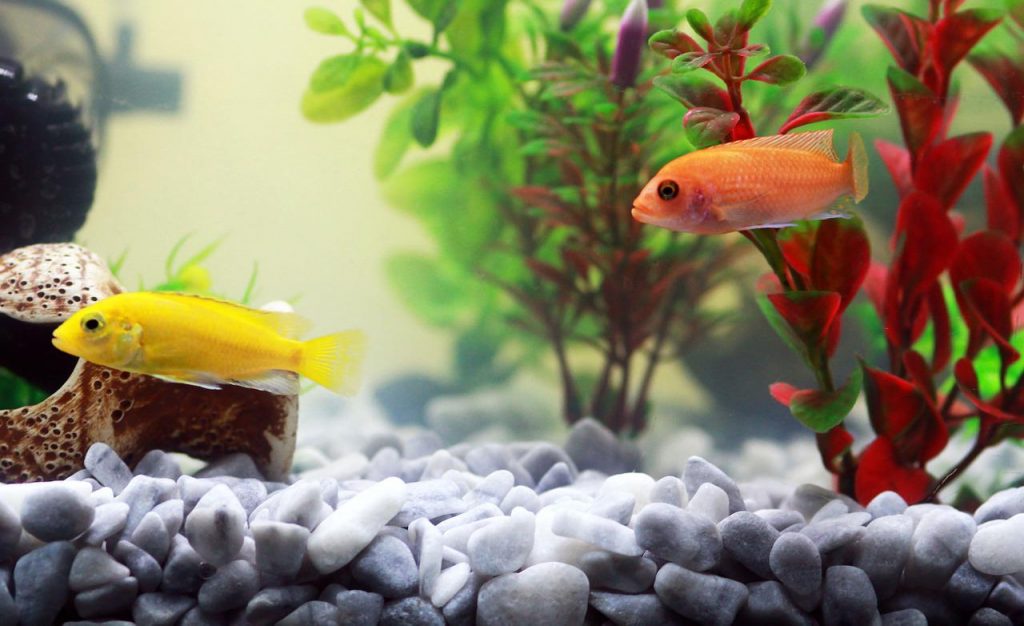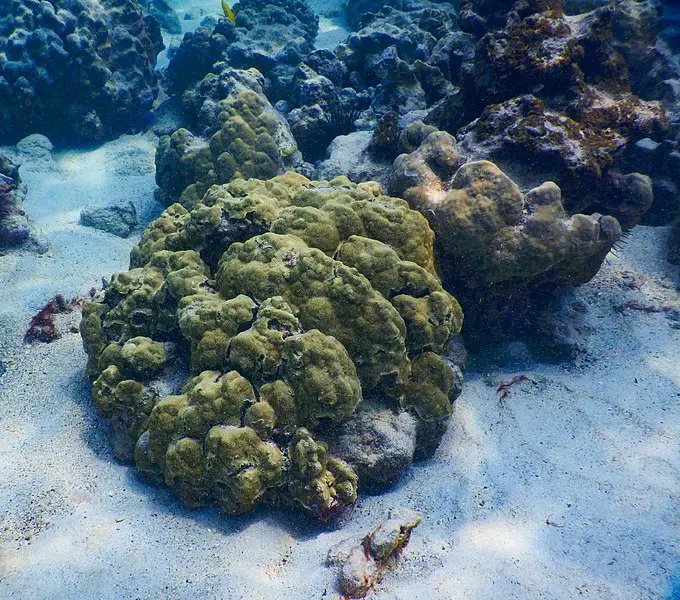Whether you’re new to the fish keeping hobby or you’re adding another fish tank to your hobby, a 75-gallon tank is a perfect option for a lot of aquarists.
It’s just the right size for you to incorporate a lot of interesting fish and express your creativity with aqua scaping. Even so, getting a new tank can be daunting, and it’s always beneficial to know what to expect when setting up a new tank.
Getting a beautiful planted 75-gallon tank requires regular cleaning, good plant selection and placement, as well as lighting.
There’s a lot that goes into setting up the perfect 75-gallon planted tank to express your creativity and set up a beautiful ecosystem. Planning ahead will help you know exactly how to tackle the challenge of setting up your tank and preempting any hiccups along the way.
The rest of this article will walk you through how to set up a planted 75-gallon tank as well as some pro tips that will help you along the way.
Setting Up Your Brand-New Tank
Getting started is important. Make sure you clean out your tank when you bring it home. It can be a little dusty from sitting on the store shelves for so long.
Hosing it off with a white vinegar and hot water wash is a good idea to make sure it’s nice and clean when you get started.
Pick where you’re going to install your tank; choose carefully. Once you fill it with water, the tank can’t be moved easily.
Rinse off the substrate (where applicable. Some don’t need rinsing) and add 1-2 inches at the bottom of your tank.
Set up your heater, filter, lights, and other aquarium equipment and prepare to cycle your tank. Fill up your tank with water and sit back for the cycling process.
This can take up to six weeks. There are several ways to increase or improve the water cycle, but once your water parameters are stable, you can add fish to the aquarium.
How Do You Aquascape a 75-Gallon Tank?
Getting Started
Aquascaping is a long and laborious project, but it’s a labor of love. Select your fish carefully based on compatibility, bioload, and how you believe they’ll contribute to the aesthetic of the tank.
Consider where they like to swim (top, middle, or bottom) in relation to the kinds of plants that you have. Setting up a beautiful planted tank is no good if you never see the fish in it! 75-gallon tanks are big enough to accommodate a lot of fish, but difficult to maintain.
Substrate Options
Aquascaping generally aims to create a natural biosphere for fish consisting of plants, rocks, natural woods, and substrate.
There are plenty of options starting out to create a unique look for your tank, and you’ll want to build it from the ground up. Some options to layer the bottom of your tank include:
- Sand
- Gravel
- Substrate
These options all have their pros and cons when installed in a tank, determining whether they’re easier to clean or more suited for planting. Pick the one that provides a balanced color in your tank to fit your fish, invertebrates, and bottom feeders.
Natural Decorations
In most cases, aquascaping goes for more natural themes, but if you want to put a fancy pirate ship in your fish tank, go right ahead! Just be wary of sharp corners that pose a hazard to fish. In general, aquascapers use the following:
- Driftwood
- Rocks
- Slate
These can be used creatively to create hiding places for your bottom feeders and give your tank a beautiful natural look. Just be sure not to ‘prop up’ any decorations so that they could fall and injure your fish.
Plants
One of the most important categories that makes an aquascaping project turn out really well is your choice of plants. While there are hundreds of species out there, some are a lot harder to care for than others and require precise planting, fertilization, and water parameters.
You also need to keep in mind where your plants are located and how tall they’re going to get. Plants provide shelter for fish and create a safer-seeming environment for them, letting them show off their beautiful colors all the more.
Some good beginner background plants include the following:
- Amazon Sword
- Jungle Val
- Bacopa
- Water Sprite
You’ll also want some plants in the midground and foreground that have defined colors and shape against the backdrop of your planted wall. Some good options that are beautiful and easy to care for include the following:
- Crytocoryne
- Anubias
How Much Does a 75-Gallon Tank Sell for?
On average, you can find a decent 75-gallon tank for under $200 dollars, although depending on the brand, you can spend up to $220 on a tank. Keep your eyes open for sales, since aquarium sales usually offer good savings, particularly on bigger tanks.
What Can I Put in a 75-Gallon Tank?
The choices for your planted 75-gallon tank are limitless. 75 gallons is enough to host a variety of large, aggressive or semi-aggressive fish that make wonderful showpieces, but many of them come with their own pros and cons―caring for fish takes a lot of species-specific research.
The answer goes beyond a definitive yes or no―some fish are aggressive towards their own species, while others can be aggressive towards everything.
Plan your fish carefully and consider their temperament, water parameter requirements, and preferred habitat. Choose tankmates selectively to avoid creating an unpleasant and conflict-ridden environment for your fish.
Final Thoughts
A 75-gallon tank is the perfect size to choose if you’re looking to host some unique fish and gives you plenty of room to aquascape to your heart’s content.
Picking your substrate, plants, decorations, and fish can be a lengthy process, but deciding how you want to start your aquascaping journey is just part of the experience.
Hopefully, this guide on how to approach setting up your planted 75-gallon tank has given you vision for your future aquarium goals.


